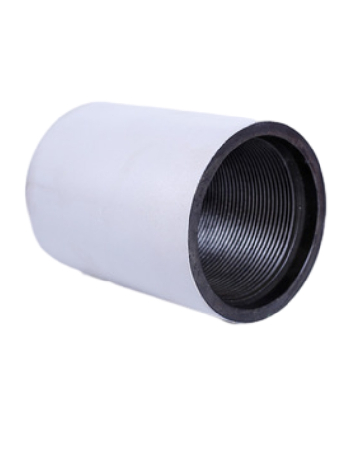- Afrikaans
- Albanian
- Amharic
- Arabic
- Armenian
- Azerbaijani
- Basque
- Belarusian
- Bengali
- Bosnian
- Bulgarian
- Catalan
- Cebuano
- Corsican
- Croatian
- Czech
- Danish
- Dutch
- English
- Esperanto
- Estonian
- Finnish
- French
- Frisian
- Galician
- Georgian
- German
- Greek
- Gujarati
- Haitian Creole
- hausa
- hawaiian
- Hebrew
- Hindi
- Miao
- Hungarian
- Icelandic
- igbo
- Indonesian
- irish
- Italian
- Japanese
- Javanese
- Kannada
- kazakh
- Khmer
- Rwandese
- Korean
- Kurdish
- Kyrgyz
- Lao
- Latin
- Latvian
- Lithuanian
- Luxembourgish
- Macedonian
- Malgashi
- Malay
- Malayalam
- Maltese
- Maori
- Marathi
- Mongolian
- Myanmar
- Nepali
- Norwegian
- Norwegian
- Occitan
- Pashto
- Persian
- Polish
- Portuguese
- Punjabi
- Romanian
- Russian
- Samoan
- Scottish Gaelic
- Serbian
- Sesotho
- Shona
- Sindhi
- Sinhala
- Slovak
- Slovenian
- Somali
- Spanish
- Sundanese
- Swahili
- Swedish
- Tagalog
- Tajik
- Tamil
- Tatar
- Telugu
- Thai
- Turkish
- Turkmen
- Ukrainian
- Urdu
- Uighur
- Uzbek
- Vietnamese
- Welsh
- Bantu
- Yiddish
- Yoruba
- Zulu
crossover sub drilling
Crossover Sub Drilling A Comprehensive Exploration
In the realm of drilling technology, the term crossover sub drilling often surfaces in discussions surrounding the optimization of drilling operations. This specialized technique serves as a bridge between different drilling systems and equipment, facilitating the transition from one type of drill string or operation to another. Understanding its mechanics, advantages, and implications is crucial for professionals in the oil and gas industry as well as in other sectors that rely on drilling technologies.
What is Crossover Sub Drilling?
Crossover sub drilling refers to the use of a crossover sub, a type of connector that allows for the seamless attachment of various components in a drill string. This device is particularly valuable in scenarios where different sizes or types of drilling tools need to be joined together. For instance, if a company is using a specific type of drill bit that requires a particular drill string configuration, a crossover sub can ensure that the transition from one system to another is efficient and effective.
The fundamental role of crossover subs is to mitigate the challenges posed by the variations in equipment, such as different diameters, thread types, or torque requirements. They are engineered to provide a secure and stable connection, thereby enhancing the overall performance of the drilling operation.
The Mechanics of Crossover Sub Drilling
Crossover subs can be designed in various configurations to suit specific operational needs. Generally, they come with features that accommodate standard drill string sizes, making them versatile tools in the field. The design of the crossover sub involves precision engineering to ensure strength and reliability under high-pressure conditions.
The process of implementing crossover sub drilling generally follows a systematic approach. Initially, the drilling team assesses the requirements of the operation, including depth, type of formation, and the nature of the drill string being used. Following this analysis, the appropriate crossover sub is selected based on its compatibility with existing equipment. The installation process involves attaching the crossover sub to the drill string at the correct juncture, ensuring that all connections are tight and secure.
Advantages of Crossover Sub Drilling
crossover sub drilling

1. Flexibility The ability to switch between different drilling systems with ease is one of the primary benefits of crossover sub drilling. This flexibility allows drilling teams to adapt to varying geological conditions and operational demands without the need for extensive equipment overhauls.
2. Cost-Efficiency By facilitating the use of existing drill strings and equipment, crossover subs can significantly reduce operational costs. This cost-effectiveness is particularly crucial in competitive markets where margins can be tight.
3. Time-Saving Crossover subs minimize downtime during transitional phases of drilling operations. The quick and straightforward nature of their installation accelerates the drilling process, allowing teams to maintain momentum and achieve project milestones more efficiently.
4. Enhanced Performance By ensuring that drilling tools operate optimally together, crossover subs can improve the overall performance of drilling operations. They help maintain drilling efficiency and effectiveness, which ultimately leads to better outcomes in resource extraction.
Challenges and Considerations
While crossover sub drilling presents many advantages, it is not without its challenges. One critical aspect is ensuring compatibility between various components, as improper combinations can lead to operational failures or inefficiencies. Additionally, the quality of the crossover sub itself is paramount; substandard products can compromise the entire drilling operation.
Furthermore, as technology advances, the need for continuous training and knowledge-sharing among drilling teams becomes essential. Familiarity with various types of crossover subs and their applications can greatly enhance a team's capability to execute complex drilling programs.
Conclusion
Crossover sub drilling represents a vital component of modern drilling technology, offering flexibility, cost savings, and operational efficiency. As the industry continues to evolve, the importance of these tools will only grow. For professionals in the field, understanding and implementing crossover sub solutions can lead to improved outcomes and successful drilling operations in an increasingly complex environment. With proper training and awareness of the challenges associated with these tools, drilling teams can leverage the benefits of crossover sub drilling to enhance their overall performance and achieve their operational goals.
-
Tubing Pup Joints: Essential Components for Oil and Gas OperationsNewsJul.10,2025
-
Pup Joints: Essential Components for Reliable Drilling OperationsNewsJul.10,2025
-
Pipe Couplings: Connecting Your World EfficientlyNewsJul.10,2025
-
Mastering Oilfield Operations with Quality Tubing and CasingNewsJul.10,2025
-
High-Quality Casing Couplings for Every NeedNewsJul.10,2025
-
Boost Your Drilling Efficiency with Premium Crossover Tools & Seating NipplesNewsJul.10,2025







